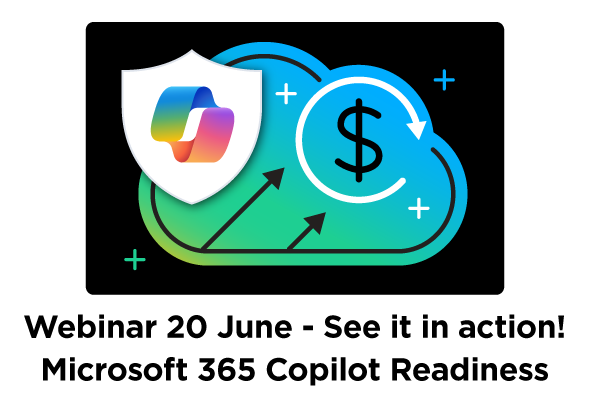Following the rise of digital transformation, Digital Marketing is a term that can be heard echoing throughout the business world. Everyone is doing it, but what does it mean? In short – it is a kind of marketing that helps businesses promote their products to an audience by connecting them through digital platforms. In fact, today, one could argue, that it is the best way for a brand to obtain reach, although it takes a great level of intentional planning to be successful. For MSPs, digital marketing historically has not been a function perceived as a high priority. However today, the use of digital platforms is especially critical because it will work to help you scale your cloud business. Therefore, we will delve into the process behind this method and explore how your MSP practice can use digital marketing to grow.
Part 1: Re-Evaluate Your Fundamentals
Identify your five P’s
Now, before you jump into pushing out a ton of great content, there are a few key fundamentals to understand. Positioning is the first step toward crafting a successful campaign. To do it right, assess the needs and wants of your audience by using the marketing mix, more generally known as the five Ps. Being able to identify each will provide insight into where your business will place within a prospective market. To ensure a strong start, you want to identify:
Product / Package
A product can be defined as a tangible or even a service. Identify what it is that you offer. Then ask yourself, who needs it and why? For instance, providing a product that fills a need will enable you to create value and obtain relevancy in a saturated market.
Price
The next thing to determine is just how much is the market willing to pay for your package or service. What is your product’s value and what are you bringing to the table?
Place
Identify the mediums where you would like to promote and sell your offerings. Is it going to be available as part of your website, through a distributor, or as part of a conversation? These are crucial things to ponder as you work to frame your strategy.
Promotion
How will you communicate that businesses need your product? Savvy MSPs understand that promotion is really the key to being able to differentiate themselves in the marketplace. What is your point of differentiation? For example, to gain a competitive edge, an MSP might position itself as one that provides the “gold standard” solution and offers the best deal for businesses that want to move to and succeed in the cloud.
People
A crucial component of any business operation is the people. This can refer to your staff and your customers. To grow your business, learning and understanding your customers’ wants and needs will give you insight into how to provide the right kind of service. This is important as you will be connecting with them through different experiences. Be it touching them from a sales experience or even from a support experience.
Build a SWOT analysis
In the following step, we will dive a little deeper. Utilizing a SWOT analysis can be extremely beneficial as it gives insight into both the internal and external factors that could be affecting your business. Let’s take a look at how you could use one to determine the potential of your practice.
Strengths
Learning your strengths gives visibility into what you are doing right and identifies your strong suits. Understanding this is highly valuable because it provides clarity about which areas will require more work and attention and which do not. For instance, in an MSP practice, the people can serve as a strength. Perhaps your business has a highly functional and skilled team. If so, turn your eye toward how you can utilize this to further enhance the touchpoints you have with your customers.
Weaknesses
Knowing your weaknesses reveal where you fall in the market in terms of value. A weakness can be a number of things. It can be pricing, a limited digital footprint, or even your inability to scale to the growing needs of your business. Regardless of what your weakness is, you should be aware of the pain points and strategize on how to correct them.
Opportunity
As an MSP, seeking opportunities in the market is very beneficial because it provides a chance to create additional revenue streams. For instance, following the recent rise of hybrid and remote work models, SMBs are concerned about the vulnerability of their data and are seeking ways to address it. This newfound demand for security presents a chance for MSPs to offer a solution.
However, even if you are not ready to act on a particular opportunity, it is always good to be aware of what’s out there, in case you want to implement one into your next strategy. Also, take caution – Just because an opportunity may present itself, does not necessarily mean that it aligns with your brand. When moving forward with any new angles, ensure it makes sense with who you are and the identity that you have created for your business.
Threats
Identifying your threats is a great way to be strategic because it will keep you vigilant and on your toes! This could be the activities of your competitors or even a major disruptor in the market. Monitoring and staying up to date on how the market is shifting will allow you the ability to make strategic decisions that positively impact your market share and aid in giving that competitive advantage.
Strategy, strategy, strategy!
Once you have your SWOT analysis and the 5 Ps in place, it is time to strategize. Although it is critical to have a long-term business strategy, it does not necessarily mean that your digital strategy should not be evolving over time. With digital marketing, you must be flexible enough to pivot in how you’re reaching your SMB customers and all that goes into that. Each new wave of communication organized within a campaign will align with a tailored strategy and a new set of goals. Let’s take a closer look at how to do this.
First, establish a clear view of what you want your campaign(s) to accomplish. Perhaps you would like to increase engagement or spread awareness about a new service. This can be reflected in a strategy statement. As the most critical step in a campaign, it is important that this be expressed as clearly as possible. Your statement should include three key components: scope, objective, and positioning. Next, in order to support your new strategy, come up with 2-3 measurable goals. These will act as a driving force and steer the direction of your marketing tactics. Depending on the kind of goal you hope to achieve, there is a number to choose from. Some examples include promotional, market share, brand attributes, and sales objectives.
To learn more – join us for part two of this blog series where we discuss how to identify your customer and how you can reach your audience at the different stages of their purchasing journey.


